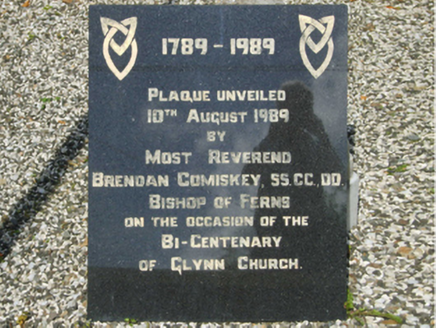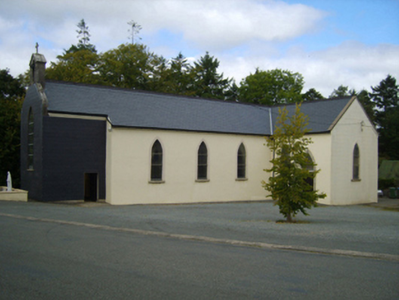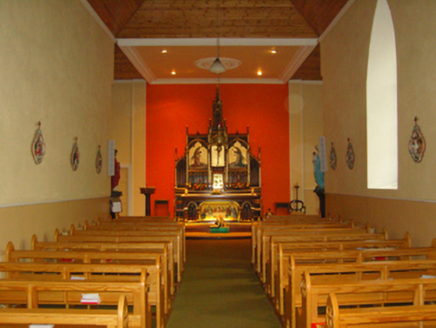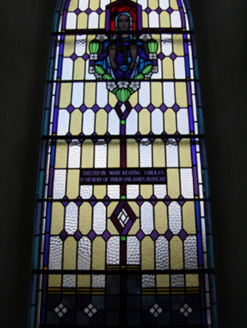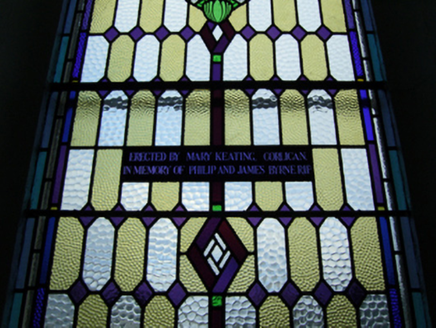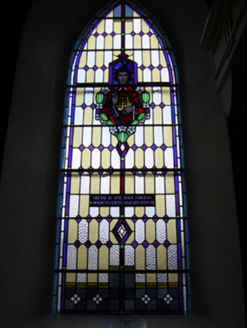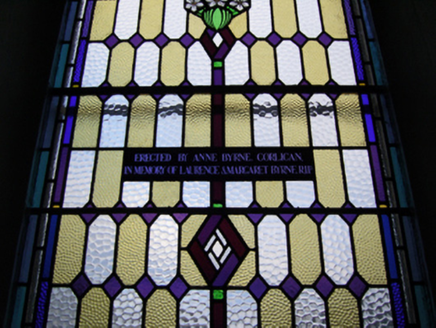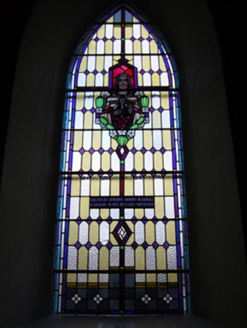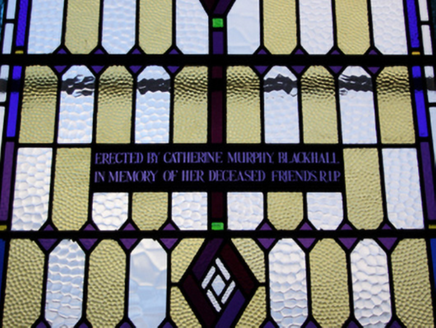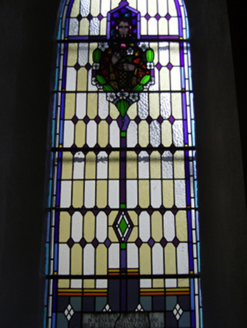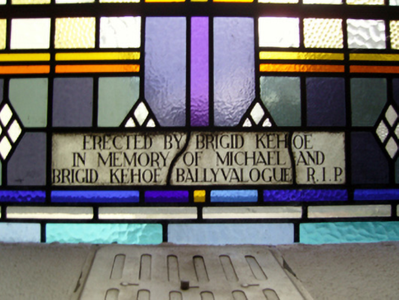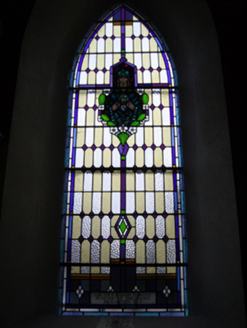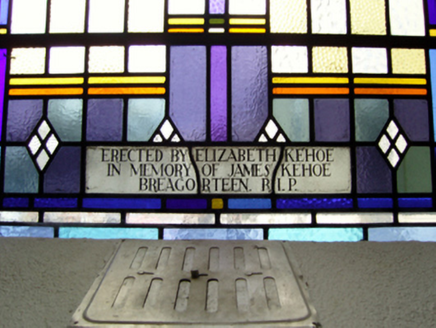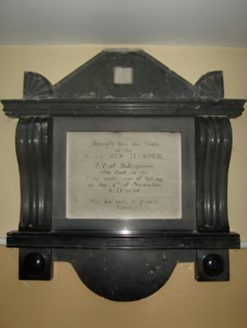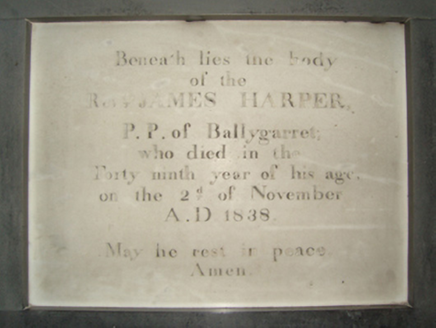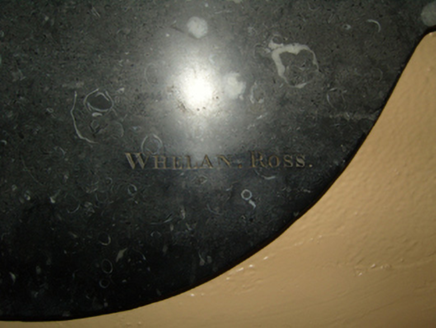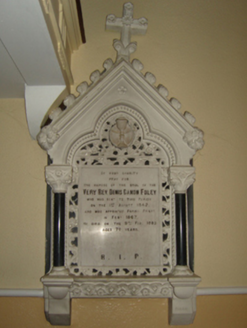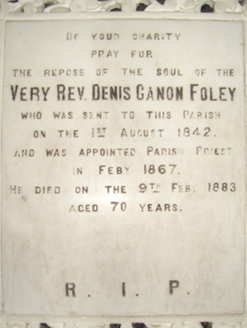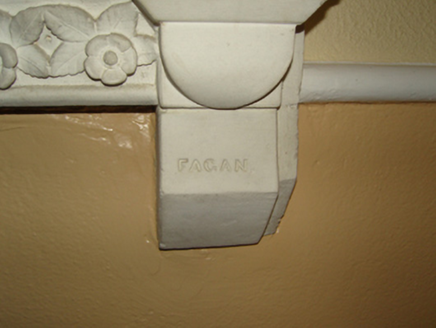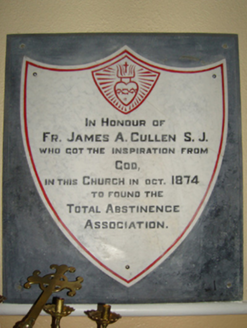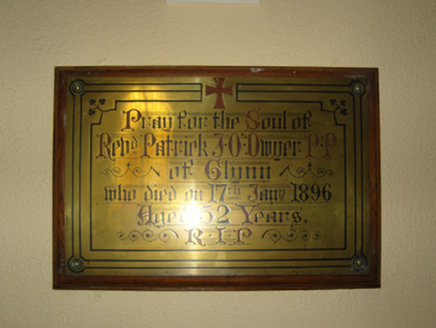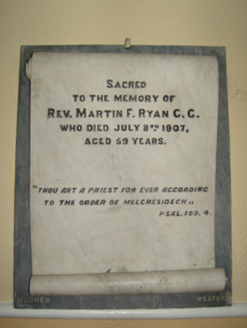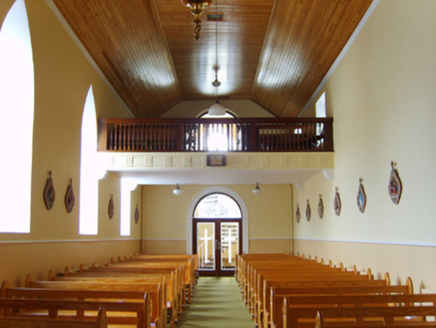Survey Data
Reg No
15703706
Rating
Regional
Categories of Special Interest
Architectural, Artistic, Historical, Scientific, Social
Original Use
Church/chapel
In Use As
Church/chapel
Date
1785 - 1790
Coordinates
296528, 125527
Date Recorded
30/08/2007
Date Updated
--/--/--
Description
Detached five-bay double-height Catholic church, dated1789, on a T-shaped plan originally four-bay double-height comprising three-bay double-height nave opening into single-bay (single-bay deep) double-height transepts centred on chancel to crossing (north); single-bay full-height "narthex" to entrance (south) front. Damaged, 1798. Renovated, 1975-6, with sanctuary reordered. Renovated, 1998. Replacement pitched slate roof on a T-shaped plan with trefoil-perforated crested clay ridge tiles, concrete coping to gables retaining lichen-covered cut-granite coping to gable to entrance (south) front with cut-granite gabled bellcote to apex framing cast-bronze bell, and uPVC rainwater goods on rendered red brick header bond stepped eaves retaining cast-iron octagonal or ogee hoppers and downpipes. Replacement cement rendered, ruled and lined battered walls; replacement artificial slate hung surface finish to entrance (south) front. Lancet window openings with cut-granite sills, and rendered "bas-relief" surrounds framing storm glazing over fixed-pane fittings having stained glass margins centred on leaded stained glass panels. Pointed-arch door openings (transepts) with cut-granite monolithic surrounds framing replacement timber boarded double doors having overlights. Lancet window opening to entrance (south) front with cut-granite sill, and concealed dressings framing storm glazing over fixed-pane fitting having stained glass margins centred on leaded stained glass panel. Interior including vestibule (south) with stained glass memorial window (1957); round-headed door opening into nave with replacement glazed timber double doors having overlight; full-height interior with balustraded choir gallery (south), carpeted central aisle between Maltese Cross-detailed timber pews, paired timber stations between stained glass memorial windows (----), wall monuments (1838; 1907), carpeted stepped dais to sanctuary to crossing (north) reordered, 1975-6, with Gothic-style timber panelled high altar, and egg-and-dart-detailed moulded plasterwork cornice to ceiling centred on "Lotus"-detailed ceiling rose in "Acroterion"-detailed frame. Set in relandscaped grounds.
Appraisal
A church representing an important component of the built heritage of County Wexford with the architectural value of the composition, one clearly showing the hallmarks of a period of construction coinciding with the gradual dismantling of the Penal Laws in anticipation of the Roman Catholic Relief Act, 1829, confirmed by such attributes as the traditional "T"-shaped plan form, aligned along a liturgically-incorrect axis; the slender profile of the openings underpinning a "medieval" Georgian Gothic theme; and the restrained bellcote embellishing the roofline as a picturesque eye-catcher in the landscape: meanwhile, the feint battered silhouette; the disproportionate bias of solid to void in the massing; and a thatch finish destroyed during the 1798 Insurrection (Craig and Garner 1975, 42), all highlight the vernacular potential of the church. Having been well maintained, the elementary form and massing survive intact together with quantities of the original fabric, both to the exterior and to the interior reordered (1975-6) in accordance with the liturgical reforms sanctioned by the Ecumenical Council of the Vatican (1962-5) where the Byrne-Whitty Memorial Window signed (1957) by A.W. Lyons and Company of Westland Row, Dublin (cf. 15609006; 15704246); Art Deco-like stained glass; wall monuments; a "flèche"-topped high altar; and decorative plasterwork enrichments, all highlight the artistic potential of a church forming part of a self-contained group alongside an adjacent parochial house (see 15703707) with the resulting ecclesiastical ensemble making a pleasing visual statement in a rural village setting.
